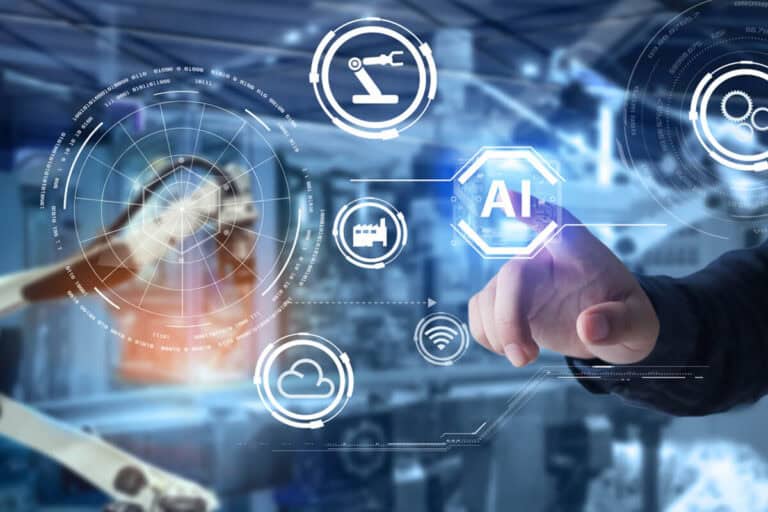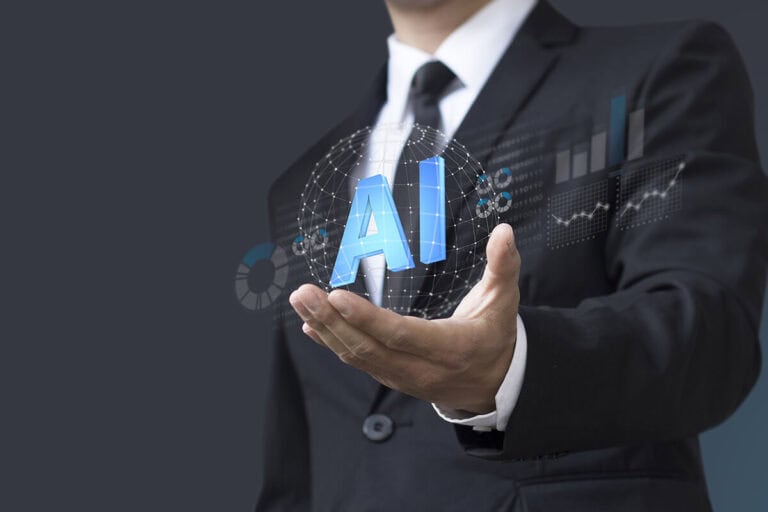Artificial intelligence (AI) is revolutionizing industries across the globe. From supply chain management to climate science, almost every profession takes advantage of data-driven technology to find efficient, risk-reducing solutions to complex and time-consuming problems.
Table of Contents
ToggleAs the efficacy of AI increases, it’s only a matter of time until technology becomes an integral part of all our lives. This is particularly interesting, as the recent shift towards remote work has shaken up workplace policies and traditions, meaning AI can seamlessly merge with new communication technology.
Here are a few ways that AI can be used as part of our day-to-day lives as remote workers.
Efficiency
At its core, AI helps improve the efficiency and efficacy of business operations. This is particularly useful for large businesses which stand to gain and lose thousands of dollars based on small, often overlooked functions — this is where enterprise AI comes in.
Enterprise AI “refers to the use of this algorithmic decision-making in large-scale business operations.” Algorithmic decision-making helps these larger businesses spot trends and issues ahead of time and reduces risk in almost all areas of business operations. This can improve the efficiency of supply chain management and can help ensure that businesses invest in the right stocks or inventory at the right time.
Enterprise AI can improve the lives of remote workers by offering services like chatbots and enhancing cybersecurity. These services are known as AI-as-a-service (AIaaS), and they seek to replace time-consuming, simple tasks with AI-driven solutions based on massive amounts of data. Of course, these solutions won’t entirely replace the need for human involvement, but they do promise to make the remote workplace more efficient and secure.
AI in Video Conferencing
Much of the communications remote workers complete are via platforms like Zoom or Skype. This means that employees have to make their home office into something of a studio to achieve the proper lighting, background, and framing.
AI can help remote workers video conference like pros by adjusting factors like lighting, the background image, and even the “smoothness” of participants’ faces. This helps remote workers look their best on camera and ensures that they can put forward a consistent, professional appearance.
AI also makes live video conferences more efficient. According to the Harvard Business Review, Zoom has already “adopted artificial intelligence at the core of its product.” These AI-driven changes have improved connections, reduced file sizes, and provided an intuitive user experience. Millions of employees have benefited from these changes, as AI has made regular, high-quality connections possible.
AI in Assessments
Most of the advancements in AI promise to make life easier for employees. However, in some industries, managers must track the work and output of employees as a measurement of their performance. This allows managers to make better judgments about their employees and helps HR departments spot folks who need help.
AI can aid performance management by tracking employee data and comparing key performance indicators in the blink of an eye. Of course, this will look different for different industries, but one can already imagine its usefulness in measuring the effectiveness of sales teams or production lines.
Of course, AI should not be implemented blindly or followed without human intervention. AI can manage and analyze massive data sets, but it isn’t yet capable of making the same complex judgment calls that HR professionals or managers make every day. In this way, AI should be seen as a tool to bring clarity to the decision-making process rather than a thoughtless yardstick.
AI and WFH
Working from home can be challenging if you can’t curate the right environment. Those who already work remotely know that creating boundaries for work is difficult when life is happening all around you and are keenly aware of the temptation to log back on after your office hours are over.
However, AI can help remote workers follow the best WFH practices. Employees can find helpful online resources that allow them to spot errors in their work to ensure they finish on time. They can help improve the efficiency of help-desk tickets, which can significantly speed up the resolution of technical issues that interrupt remote workers’ busy schedules.
Through wearable technology, AI can also improve remote workers’ quality of life, which reminds users to stand up and tracks health analytics throughout the day. For example, a watch synched to AI technology can spot arrhythmic heartbeats and analyze how you type to predict the onset of conditions like depression and anxiety. These AI innovations ensure that remote workers still receive personalized attention, even when they aren’t in a physical work environment.
Artificial intelligence is changing almost every industry for the better. Remote workers can use these innovations to improve their overall efficiency and consistently maintain a professional appearance through video conferencing platforms. These changes also seek to better remote workers’ quality of life and focus on essential elements of the workday.





